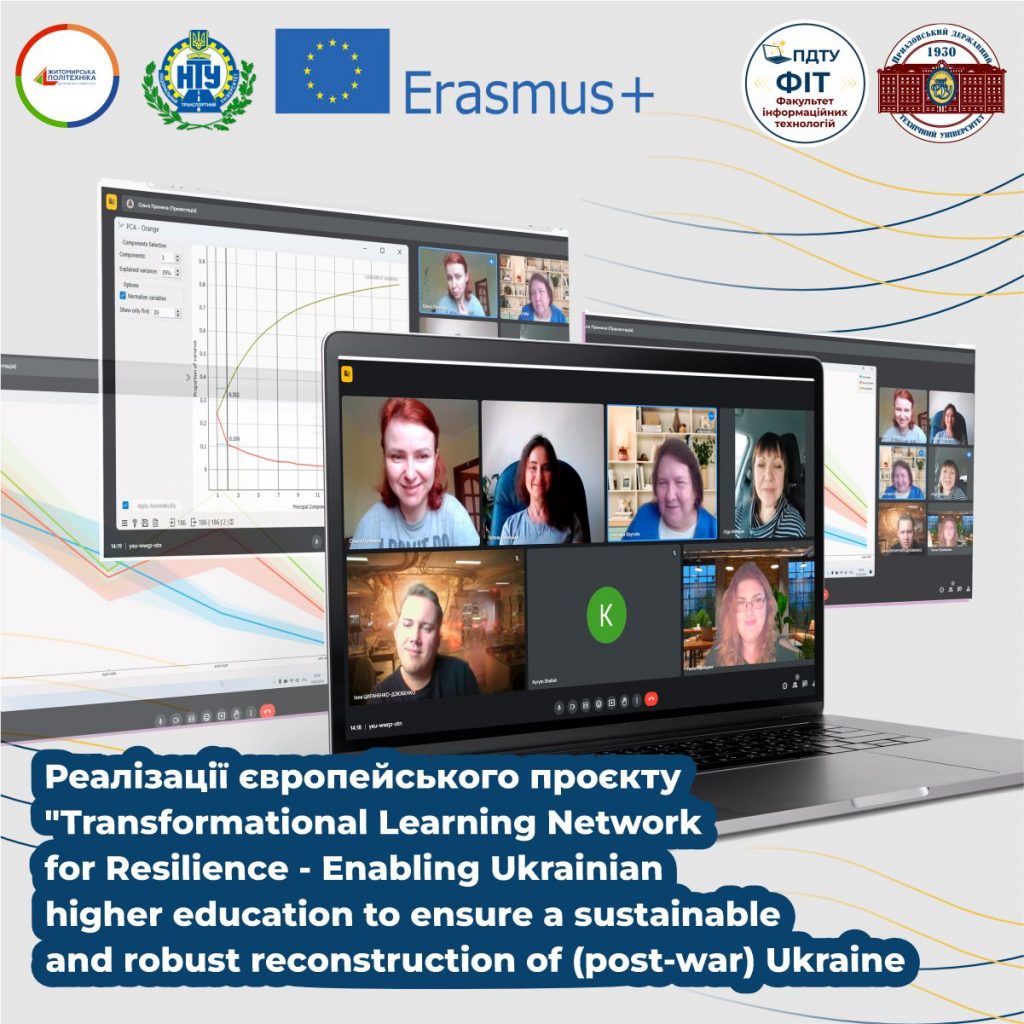Within the framework of the European project “Transformational Learning Network for Resilience – Enabling Ukrainian higher education to ensure a sustainable and robust reconstruction of (post-war) Ukraine,” a consortium of scholars engaged in scientific activities related to modeling and forecasting has been established.
This consortium includes scientists from across Ukraine, namely:
Viktoriia Khrutba, Doctor of Technical Sciences, Professor (National Transport University), Tetiana Levytska, Associate Professor, Candidate of Technical Sciences (Priazovskyi State Technical University), Olha Pronina, Associate Professor, Candidate of Technical Sciences (Priazovskyi State Technical University), Hanna Kireitseva, Associate Professor, Doctoral Candidate, Candidate of Economic Sciences (Zhytomyr Polytechnic State University), Illia Tsyhanenko-Dziubenko, Postgraduate Student (Zhytomyr Polytechnic State University), and Kyrylo Sheliah, Student (Priazovskyi State Technical University).
As part of the consortium’s functioning, scientific activities are being carried out regarding modeling environmental processes and technologies, as well as forecasting environmental conditions using mathematical and computer methods.
The primary goal of this consortium is to develop innovative approaches to modeling and forecasting ecological-economic systems, applying machine learning techniques, neural network algorithms, and simulation modeling to assess the impact of anthropogenic factors on the environment, as well as to find optimal solutions for sustainable development and ecosystem restoration in the post-war period.
The main objectives of the consortium include:
- Modeling atmospheric diffusion processes of pollutants using convection-diffusion equations and numerical methods for their solution.
- Implementing machine learning algorithms to forecast changes in pollutant concentrations in air and water environments.
- Developing geographic information systems for visualizing and analyzing the spatio-temporal dynamics of environmental indicators.
- Creating multi-agent models to simulate the interaction between socio-economic and ecological subsystems.
- Optimizing natural resource management processes using linear and nonlinear programming methods.
The prospects for the development of this consortium include establishing international collaborations with leading scientific centers, implementing research findings in the practical activities of government and private organizations, and training highly qualified personnel in the field of environmental modeling and forecasting.
The expected outcomes include the development of new mathematical models and computer programs for analyzing and assessing environmental risks, the creation of databases of environmental indicators, the publication of scientific articles in high-ranking journals, participation in international conferences, and the implementation of joint research projects.

